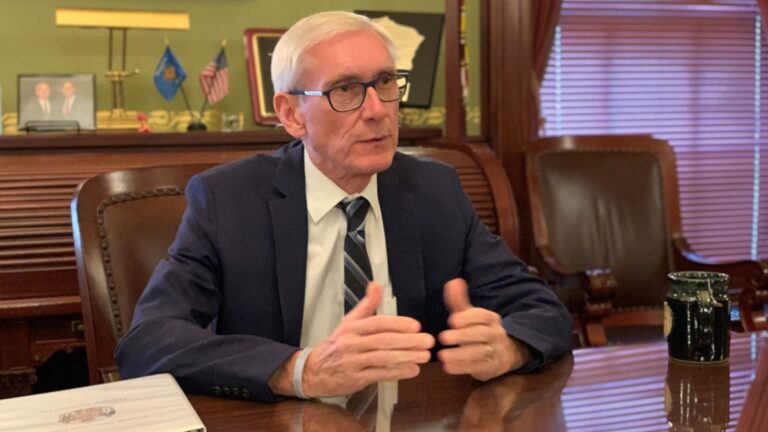Gov. Tony Evers has reached an agreement with six other Midwest governors to coordinate plans to reopen their economies.
Evers and governors in Michigan, Illinois, Minnesota, Ohio, Indiana and Kentucky are putting together a plan to lift restrictions based on achieving the following goals, according to statements by Illinois Gov. JB Pritzker and Michigan Gov. Gretchen Whitmer:
- Continuous control of the rate of new infections and hospitalizations.
- Improved testing and detection capability.
- Adequate health care capacity to deal with resurgence.
- Best practices for social distancing in the workplace.
The coordinated approach among seven Midwest governors does not mean each state will necessarily reopen at the same time while recovering from the coronavirus pandemic, the governors said in a joint statement.
Live Updates: The latest on the coronavirus in Wisconsin
Daily Digestion: What you need to know about the coronavirus in Wisconsin
Share your story: We want to talk to doctors, nurses and others affected by the coronavirus
The announcement also did not give a date for when governors plan to begin easing stay-at-home orders to restart their economies.
“We are doing everything we can to protect the people of our states and slow the spread of COVID-19, and we are willing to work together to mitigate the economic crisis this virus has caused in our region,” the governors said.
In addition to Evers, governors who signed the statement included Whitmer, Mike DeWine of Ohio, Tim Walz of Minnesota, Pritzker, Eric Holcomb of Indiana and Andy Beshear of Kentucky.
Whitmer, Evers, Walz, Pritzker and Beshear are Democrats. DeWine and Holcomb are Republicans.
Evers announced Thursday that Wisconsin schools would remain closed for the remainder of the school year and extended his “safer at home” orders that have closed many businesses through the end of May, drawing criticism from Republicans.
Similar regional approaches are underway among governors in the western US and the Northeast. Since residents can move freely between state borders, a regional approach helps avoid situations in which one state, for example, has closed greenhouses, but its residents can travel to a neighboring state where they are open to purchase the same objects.
Also on Thursday, the Trump administration issued guidelines for governors to consider in deciding whether to gradually reopen businesses and relax social distancing and other protective measures in a three-phase process.
Under the guidelines, cooperating states or districts would not begin the first phase until they see a clear downward trajectory in confirmed COVID-19 cases or test results and a reduction in cases with flu symptoms over a two-week period.
The guidelines also call on states to be able to treat all COVID-19 patients without the need for additional beds or equipment and to implement a “robust testing program” for health care workers and be ready to respond if new increase in cases.
Restrictions will then be gradually lifted in businesses, schools and public spaces as cases continue to decline. However, governors would have the final say on how best to implement the guidelines, which were framed as proposals.
Trump said he encouraged states to work together, but added, “Every state is very different,” and “if they need to stay closed, we'll let them,” he said.
Paul Egan reported for the Detroit Free Press. Molly Beck reported in the Milwaukee Journal Sentinel.
Contact Paul Egan: 517-372-8660 or pegan@freepress.com. Follow him on Twitter @paulegan4. Read more about Michigan politics and subscribe to our electoral roll.
Contact Molly Beck at molly.beck@jrn.com. Follow her on Twitter at @MollyBeck.

